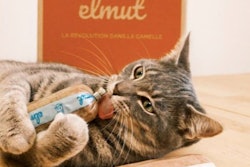
It’s becoming a familiar (not to mention sad and scary) story: U.S. pet food inflation hit another new high in August 2022, rising to 13.1% year over year (YOY). Like most other things related to pet food, it’s closely following human food in this regard. The scary part arises from the fact that inflation in pet food is rapidly catching up to human food inflation, which reached 13.5% YOY in August.
Once the U.S. Bureau of Labor Statistics released the latest inflation data based on the consumer price index (CPI) on September 13, John Gibbons, aka the Pet Business Professor, who has been tracking “petflation” all year, quickly shared the pet industry, pet food and human food data breakouts. Thanks to John for the information.
Inflation stubbornly high, despite decline in gas prices
While the overall CPI increase declined slightly YOY from July to August 2022 (by 1%), that’s not necessarily good news because it still remained stubbornly high, at 8.3%, despite the U.S. Federal Reserve raising interest rates to try and dampen inflation. And, though consumers have started to get relief in some categories, such as gas (inflation fell 10.8% from July to August), others that significantly impact people’s finances continue to see rising inflation.
For example, eating away from home is costing ever more, increasing 0.9% from July to August and 8% YOY from August 2021. That’s still not as bad as the rise in cost of groceries, also called “food at home” — that 13.5% YOY that probably affects consumers the most. It increased 0.7% from July to August.
Certain types of foods, including staples, are experiencing even worse cost increases: An Associated Press chart highlighted eggs, for which inflation rose 2.9% from July to August and a whopping 39.8% YOY. (This subcategory, along with poultry meat, has also been affected by the avian influenza outbreak.)
Why pet owners are feeling the pain
Pet-owning consumers are feeling even more pain these days. According to Gibbons’ analysis, the pet care industry overall experienced 10.1% inflation YOY in August, up 1.1% from July. That was driven mainly by inflation within the subcategories of veterinary care (up 10% YOY, 0.8% from July) and pet food. Besides clocking in at 13.1% YOY, pet food inflation increased a full 1.7% from July to August.
That pet food inflation rose more in the past month than did human food inflation (for groceries/food at home) is not a comfortable fact. Looking at longer timeframes makes the picture for pet food a little more positive, but again, it appears to be catching up to other categories like pet care overall and food at home.
For example, looking at the year to date (YTD) — eight months’ worth of inflation data, from January through August 2022 — the CPI is at 8.3% (the same as August 2021 to August 2022) and food at home is at 11%, compared to pet food’s 7.8% YTD. Going farther back, from 2019 to 2022 YTD, pet food’s 8.7% looks much better than the CPI’s 13.9%, total pet’s 11.7% and food at home’s whopping 17.3%.
Yet, as previous analysis by Gibbons explained, pet food in the U.S. was actually in a deflationary period from at least 2019 until late 2021. The fact that inflation in the subcategory keeps increasing each month in 2022, and rising more rapidly than even most human food categories, means pet food companies, suppliers, retailers and especially pet owners are in for a long ride.
In April 2022, NielsenIQ surveyed dog and cat owners about their pet product purchasing. Two-thirds said that even if prices increase for their preferred pet foods, they don’t expect to “trade down” to lower-priced options — though some owners are becoming more likely to buy smaller packages to save money short term.
As pet food prices continue to increase, will pet owners still try to avoid trading down, possibly cutting back purchases in other areas? There may be a limit to how much their family budgets can absorb.

















